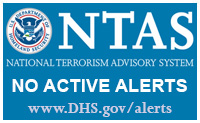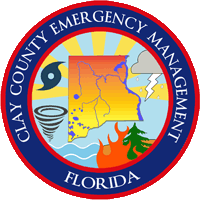 This month, the Amateur Radio on the International Space Station (ARISS) program marked its 1000th space station Amateur Radio event, continuing a string that started 15 years ago, when the program established the first permanent ham radio presence in space. The inaugural ARISS contact took place on December 21, 2000, between a member of the ISS Expedition 1 crew and youngsters at Luther Burbank Elementary School near Chicago. Several pupils and a teacher got to chat on 2 meters with “Space Station Alpha” Commander William “Shep” Shepherd, KD5GSL. The contact had a rocky start. Attempts by the school a couple of days earlier had been unsuccessful, despite extensive technical preparations hampered by snowstorms and sub-freezing temperatures. That contact marked the first use of the special NA1SS call sign for a school contact.
This month, the Amateur Radio on the International Space Station (ARISS) program marked its 1000th space station Amateur Radio event, continuing a string that started 15 years ago, when the program established the first permanent ham radio presence in space. The inaugural ARISS contact took place on December 21, 2000, between a member of the ISS Expedition 1 crew and youngsters at Luther Burbank Elementary School near Chicago. Several pupils and a teacher got to chat on 2 meters with “Space Station Alpha” Commander William “Shep” Shepherd, KD5GSL. The contact had a rocky start. Attempts by the school a couple of days earlier had been unsuccessful, despite extensive technical preparations hampered by snowstorms and sub-freezing temperatures. That contact marked the first use of the special NA1SS call sign for a school contact.
“It has always been all about youth, piquing their interest in Amateur Radio, science, technology — especially wireless technology — engineering, math, and aerospace…really anything educational, and it will always be about these things,” said ARISS International Secretary Rosalie White, K1STO. While on the ARRL Headquarters staff, White was in on the ground floor of ARISS, which grew out of the space shuttle-era SAREX (Space Amateur Radio EXperiment). She represented ARRL, an ARISS partner, in initial discussions to set ARISS into motion.
![Rosalie White, K1STO. [ARISS photo]](http://www.clayares.org/wp/wp-content/uploads/2015/10/image2-235x300.jpg)
Rosalie White, K1STO. [ARISS photo]
In 1996, with the ISS still a few years off, the SAREX team decided not to wait until the first crew was on station to start thinking about getting Amateur Radio on board, White said. By then it would be too late to ensure equipment room in the ISS’s tight quarters as well as to address cabling, antennas, power, flight certification — myriad details that also included both NASA and Russian approvals and licensing astronauts. NASA stipulated that it wanted a single, worldwide group to be solely responsible for “everything Amateur Radio” on the ISS.
With a lot of hard work, an ARISS team based on countries having space agencies supporting the ISS — Canada, Japan, Russia, several European countries, and the US — was pulled together. White said it was “a monumental task” to get everyone to the US for the scheduled meeting dates in November 1996.
“In the end, at least one Amateur Radio operator came from Canada, Japan, Europe, Russia, and the United States, the areas now known as ARISS regions,” White said. “That’s how it all began!”
ARRL Education Services Manager Debra Johnson, K1DMJ, said NASA will be celebrating the arrival of the first crew to inhabit the ISS. “The ham radio gear was activated a few days later,” she said. “Amateur Radio is considered the first ISS payload.”
Astronaut Reid Wiseman, KF5LKT, operated ARRL Field Day from NA1SS on the International Space Station and took part in several ARISS school contacts. [NASA photo]

Astronaut Reid Wiseman, KF5LKT, operated ARRL Field Day from NA1SS on the International Space Station and took part in several ARISS school contacts. [NASA photo]
ARISS touches tens of thousands of students per year. One ARISS goal is to inspire an interest among young people in science, technology, engineering, and math (STEM) subjects and in STEM careers. Another is to provide an educational opportunity for students, teachers, and the public to learn about space exploration and satellites, as well as about wireless technology and radio science through Amateur Radio.
The program has made a positive impression on educators, with 92 percent of those who have been involved indicating that ARISS provided ideas for encouraging student exploration, discussion, and participation, and 78 percent saying that ARISS was effective in stimulating student interest in STEM.
The proposal submission deadline is looming for schools, educational organizations, and groups willing and able to host an ARISS contact in 2016. The window for formal and informal proposals closes on November 1.
In an era of tighter NASA budgets, ARISS International President Frank Bauer, KA3HDO, recently indicated that ARISS needs to raise $90,000 annually to maintain its current level of operation, and $214,000 to grow operations and meet its desired goals. ARISS encourages donations via the AMSAT website (select the “ARISS Donate” button). Individuals contributing $100 or more will receive the new ARISS Challenge Coin.




